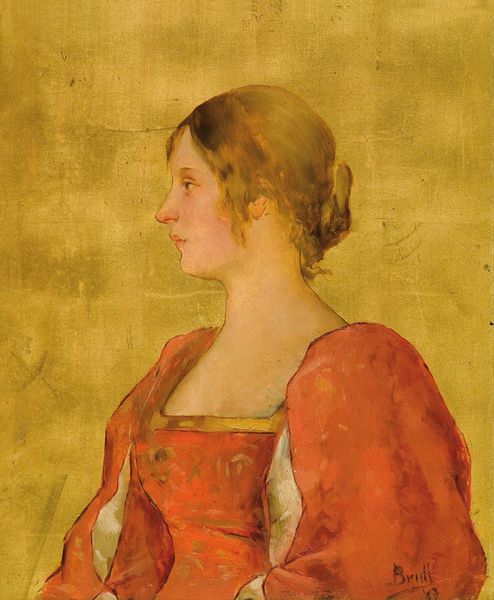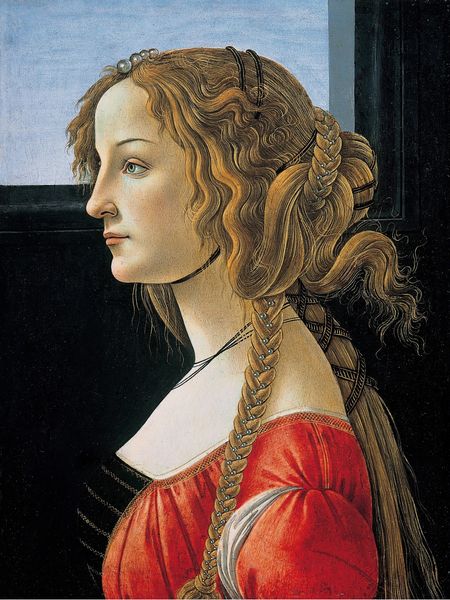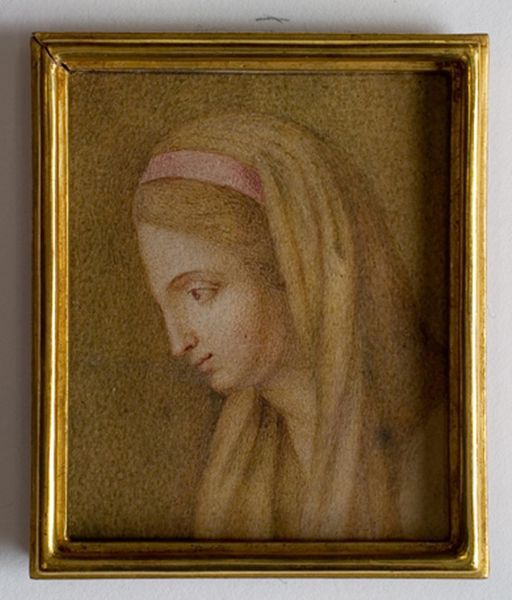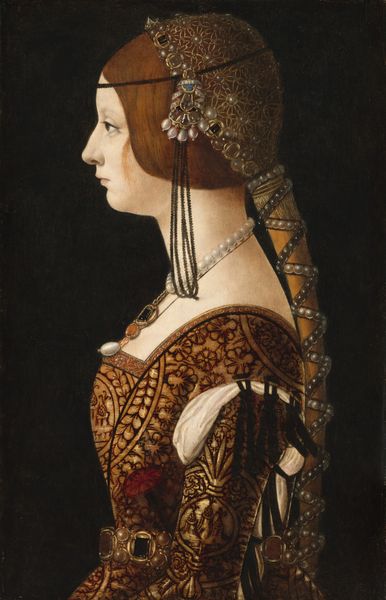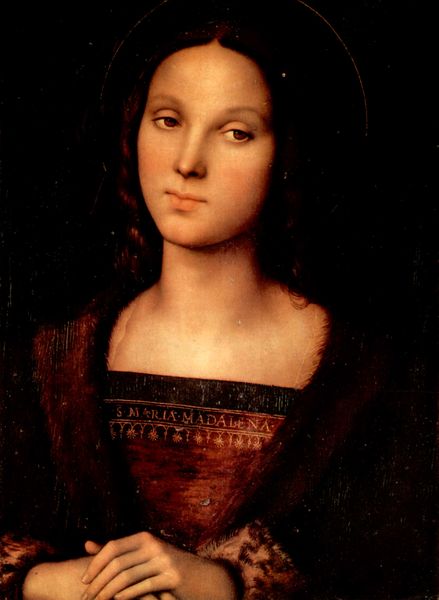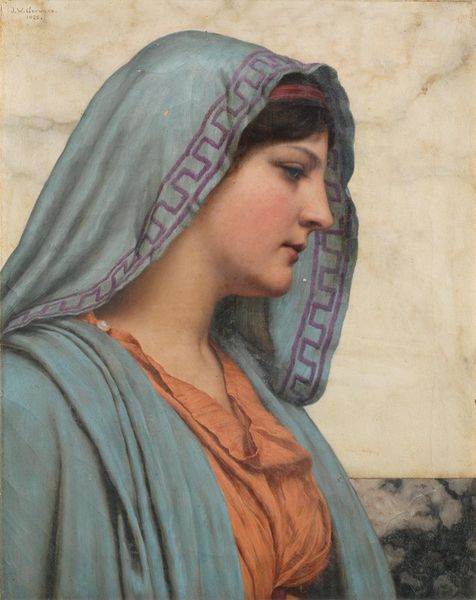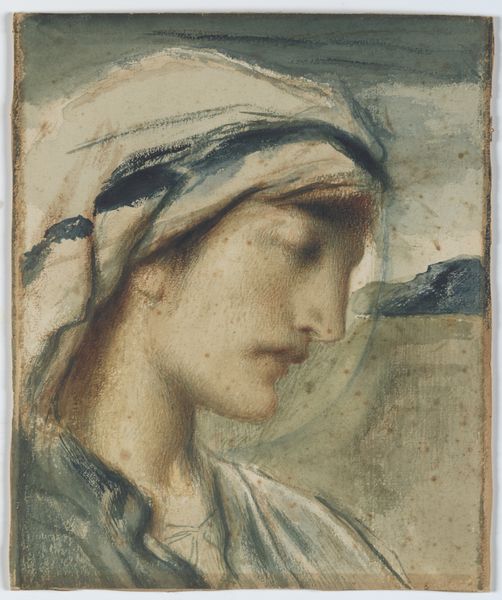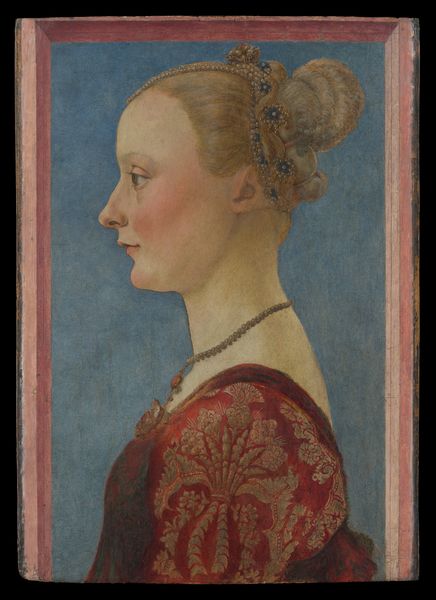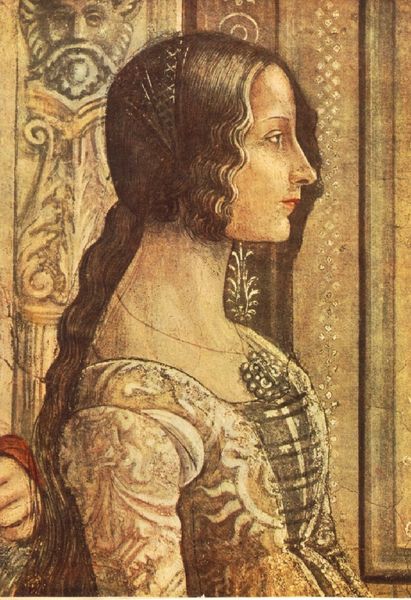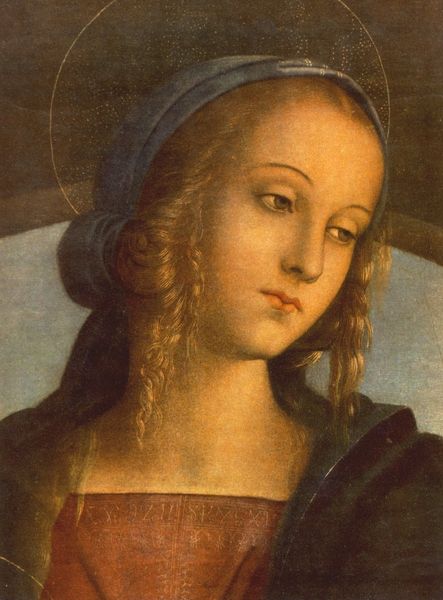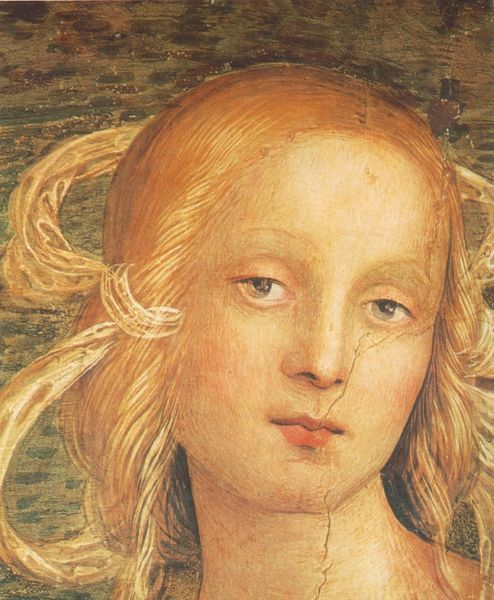
painting, oil-paint
#
portrait
#
painting
#
oil-paint
#
11_renaissance
#
oil painting
#
italian-renaissance
Copyright: Public domain
Editor: This is "La Bella Principessa - Portrait of Bianca Sforza" attributed to Leonardo da Vinci, painted around 1498, using oil paint. It’s quite striking how smooth the colors are, and the way the dress almost fades into the background. How would you interpret this work? Curator: Well, let’s think about what oil paint allowed Da Vinci to do at the time. Compared to egg tempera, oil paints enabled far more blending. The portrait is more than just a likeness. It’s a carefully crafted display of wealth and status. Editor: How so? The simplicity makes it seem less about status and more about beauty. Curator: Consider the production of clothing during that time period. Everything was made by hand and the dress, however simple it looks to us now, speaks volumes about the commission and material culture that went into its creation. Each thread would have been meticulously woven and dyed, then stitched with careful deliberation by a skilled hand. The dress then is symbolic of social hierarchy. Editor: That makes sense. The materials really do speak to the larger world around it. It's not just an image, but evidence of labor and class. Curator: Exactly! And thinking about Da Vinci, and the social context of artists at that time - where did he fit within this hierarchy and consumption? These portraits show a very particular interaction between labor, commission, and consumerism that we continue to examine in the art world. Editor: I never considered portraiture from that angle before! It definitely highlights how a seemingly straightforward painting can tell us so much about Renaissance society and Da Vinci’s role within it. Thanks for pointing that out.
Comments
No comments
Be the first to comment and join the conversation on the ultimate creative platform.


